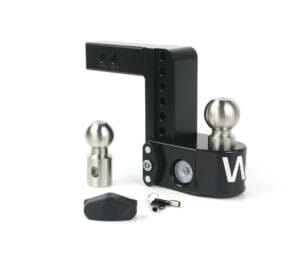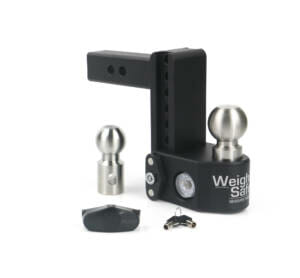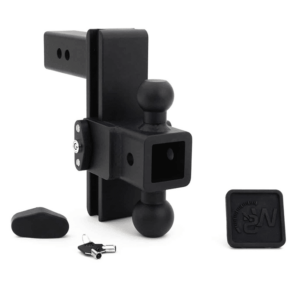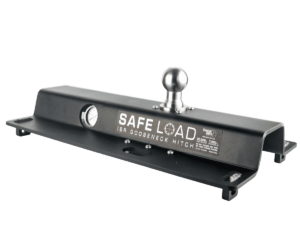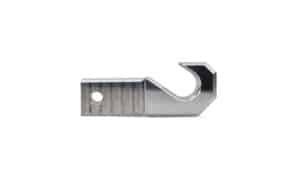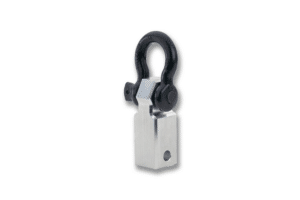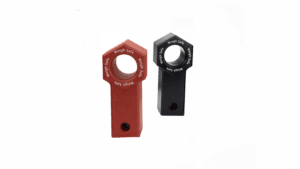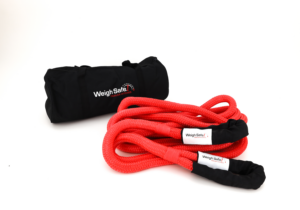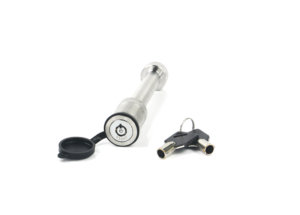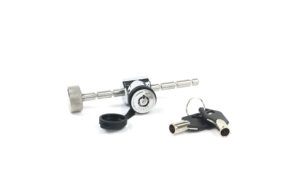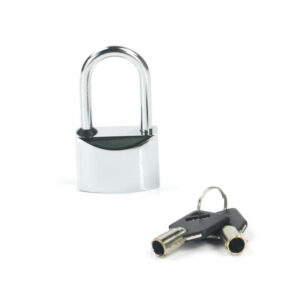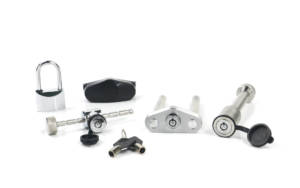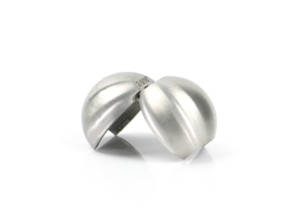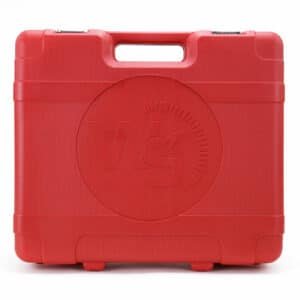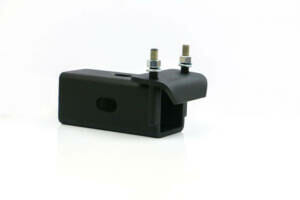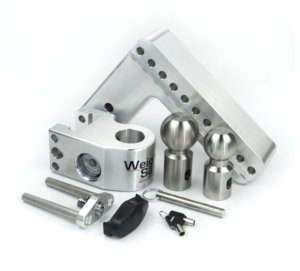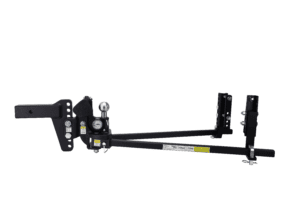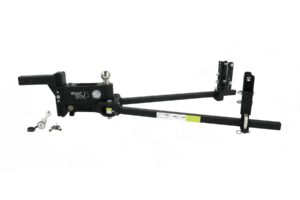Company News
Pre-Tow Checklist – Balancing Your Trailer Load
The most important thing you can do on your next trip is to get there safely, that’s why we’ve created resources that can act as your pre-tow checklist. The video below shows us out having fun on snowmobiles, but none of us would have had any fun if we had let our trailer load get out of whack.
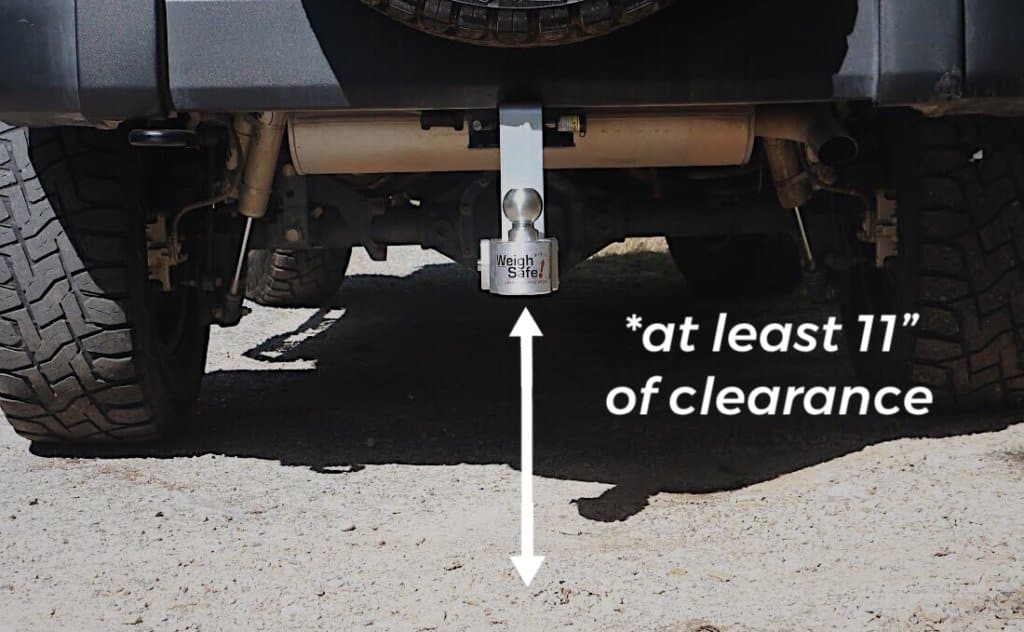 Now that you have verified ball mount clearance, you can then continue to check your trailer load. The trailer load should be loaded in a way that the weight is evenly distributed on both left and right sides of the trailer, all while abiding by your gross vehicle and trailer weight ratings (see previous blog posts for reference) and keeping your tongue weight within 10-15% of your GTW.
We recommend loading heavier items on the front of the trailer, in front of the trailer axle. You will then continue to load the trailer accordingly, verifying that the weight is equally distributed between the left and right side of the trailer.
After you have everything loaded onto the trailer, check to make sure your tongue weight is within the 10-15% GTW range. If your tongue weight reads on the heavier side, exceeding 15% of your GTW, shift items towards the back of the trailer and vice versa, if your tongue weight is on the lighter side and less than 10% of your GTW, you will need to shift items towards the front of the trailer.
A good rule of thumb when loading a trailer is to put 60% of the weight of your load towards the front of the trailer. Sometimes this will vary depending on what you are towing but usually this is a good rule to go by.
Now that you have verified ball mount clearance, you can then continue to check your trailer load. The trailer load should be loaded in a way that the weight is evenly distributed on both left and right sides of the trailer, all while abiding by your gross vehicle and trailer weight ratings (see previous blog posts for reference) and keeping your tongue weight within 10-15% of your GTW.
We recommend loading heavier items on the front of the trailer, in front of the trailer axle. You will then continue to load the trailer accordingly, verifying that the weight is equally distributed between the left and right side of the trailer.
After you have everything loaded onto the trailer, check to make sure your tongue weight is within the 10-15% GTW range. If your tongue weight reads on the heavier side, exceeding 15% of your GTW, shift items towards the back of the trailer and vice versa, if your tongue weight is on the lighter side and less than 10% of your GTW, you will need to shift items towards the front of the trailer.
A good rule of thumb when loading a trailer is to put 60% of the weight of your load towards the front of the trailer. Sometimes this will vary depending on what you are towing but usually this is a good rule to go by.
 It is also important to load your trailer appropriately based on the type of trailer you are towing. If you are towing an enclosed trailer, the same rule applies that 60% should be in the front. Since you can stack items as high as the trailer, it is important to load the heavier items first and put the lighter items on top. Whereas if you are towing an open trailer, you should load items in the same manner but not above the height of the sides of the trailer. The same goes for loading any bumper tow travel trailers or toy haulers.
Once everything is loaded correctly, you will need to secure your load to ensure nothing is loose or able to come out/off of the trailer. First check your spare tire and make sure that it remains tightly fastened into its storage location, then strap the rest of your load down from a couple different angles to really ensure it won’t move or shift during travel.
Securing items from different angles is necessary for last minute changes in speed or direction while driving. I can’t tell you how many times I have seen stray items along the side of the road and sometimes right in the middle of the road that have come from open trailers. It’s also a good idea to check your load and tie downs every so often to ensure everything is securely in place and hasn’t shifted around or hasn’t thrown off your tongue weight.
Author: Ashley Lee
It is also important to load your trailer appropriately based on the type of trailer you are towing. If you are towing an enclosed trailer, the same rule applies that 60% should be in the front. Since you can stack items as high as the trailer, it is important to load the heavier items first and put the lighter items on top. Whereas if you are towing an open trailer, you should load items in the same manner but not above the height of the sides of the trailer. The same goes for loading any bumper tow travel trailers or toy haulers.
Once everything is loaded correctly, you will need to secure your load to ensure nothing is loose or able to come out/off of the trailer. First check your spare tire and make sure that it remains tightly fastened into its storage location, then strap the rest of your load down from a couple different angles to really ensure it won’t move or shift during travel.
Securing items from different angles is necessary for last minute changes in speed or direction while driving. I can’t tell you how many times I have seen stray items along the side of the road and sometimes right in the middle of the road that have come from open trailers. It’s also a good idea to check your load and tie downs every so often to ensure everything is securely in place and hasn’t shifted around or hasn’t thrown off your tongue weight.
Author: Ashley Lee
[youtube https://www.youtube.com/watch?v=Ua0wWP-iToo] Recently we shared the importance of properly connecting your truck and trailer as a crucial step in your pre-tow checklist to ensure a safe and high performing trip. Next on the pre-tow checklist is checking the proper placement and balance of your trailer load.
Pre-Tow Checklist – Trailer Load
Once your trailer is properly connected to your vehicle and before you check your load, we recommend that you give a quick check to the height clearance between the road and the bottom of your ball mount. Let me explain; we recommend that you have at least 11” of clearance from the lowest point of your hitch (ball mount) to the ground. This should allow enough clearance from road hazards, bumps, curbs, and any other possible collision points. Anything less than 11” of clearance runs the risk of scraping or dragging in certain road conditions. Now that you have verified ball mount clearance, you can then continue to check your trailer load. The trailer load should be loaded in a way that the weight is evenly distributed on both left and right sides of the trailer, all while abiding by your gross vehicle and trailer weight ratings (see previous blog posts for reference) and keeping your tongue weight within 10-15% of your GTW.
We recommend loading heavier items on the front of the trailer, in front of the trailer axle. You will then continue to load the trailer accordingly, verifying that the weight is equally distributed between the left and right side of the trailer.
After you have everything loaded onto the trailer, check to make sure your tongue weight is within the 10-15% GTW range. If your tongue weight reads on the heavier side, exceeding 15% of your GTW, shift items towards the back of the trailer and vice versa, if your tongue weight is on the lighter side and less than 10% of your GTW, you will need to shift items towards the front of the trailer.
A good rule of thumb when loading a trailer is to put 60% of the weight of your load towards the front of the trailer. Sometimes this will vary depending on what you are towing but usually this is a good rule to go by.
Now that you have verified ball mount clearance, you can then continue to check your trailer load. The trailer load should be loaded in a way that the weight is evenly distributed on both left and right sides of the trailer, all while abiding by your gross vehicle and trailer weight ratings (see previous blog posts for reference) and keeping your tongue weight within 10-15% of your GTW.
We recommend loading heavier items on the front of the trailer, in front of the trailer axle. You will then continue to load the trailer accordingly, verifying that the weight is equally distributed between the left and right side of the trailer.
After you have everything loaded onto the trailer, check to make sure your tongue weight is within the 10-15% GTW range. If your tongue weight reads on the heavier side, exceeding 15% of your GTW, shift items towards the back of the trailer and vice versa, if your tongue weight is on the lighter side and less than 10% of your GTW, you will need to shift items towards the front of the trailer.
A good rule of thumb when loading a trailer is to put 60% of the weight of your load towards the front of the trailer. Sometimes this will vary depending on what you are towing but usually this is a good rule to go by.
 It is also important to load your trailer appropriately based on the type of trailer you are towing. If you are towing an enclosed trailer, the same rule applies that 60% should be in the front. Since you can stack items as high as the trailer, it is important to load the heavier items first and put the lighter items on top. Whereas if you are towing an open trailer, you should load items in the same manner but not above the height of the sides of the trailer. The same goes for loading any bumper tow travel trailers or toy haulers.
Once everything is loaded correctly, you will need to secure your load to ensure nothing is loose or able to come out/off of the trailer. First check your spare tire and make sure that it remains tightly fastened into its storage location, then strap the rest of your load down from a couple different angles to really ensure it won’t move or shift during travel.
Securing items from different angles is necessary for last minute changes in speed or direction while driving. I can’t tell you how many times I have seen stray items along the side of the road and sometimes right in the middle of the road that have come from open trailers. It’s also a good idea to check your load and tie downs every so often to ensure everything is securely in place and hasn’t shifted around or hasn’t thrown off your tongue weight.
Author: Ashley Lee
It is also important to load your trailer appropriately based on the type of trailer you are towing. If you are towing an enclosed trailer, the same rule applies that 60% should be in the front. Since you can stack items as high as the trailer, it is important to load the heavier items first and put the lighter items on top. Whereas if you are towing an open trailer, you should load items in the same manner but not above the height of the sides of the trailer. The same goes for loading any bumper tow travel trailers or toy haulers.
Once everything is loaded correctly, you will need to secure your load to ensure nothing is loose or able to come out/off of the trailer. First check your spare tire and make sure that it remains tightly fastened into its storage location, then strap the rest of your load down from a couple different angles to really ensure it won’t move or shift during travel.
Securing items from different angles is necessary for last minute changes in speed or direction while driving. I can’t tell you how many times I have seen stray items along the side of the road and sometimes right in the middle of the road that have come from open trailers. It’s also a good idea to check your load and tie downs every so often to ensure everything is securely in place and hasn’t shifted around or hasn’t thrown off your tongue weight.
Author: Ashley Lee


